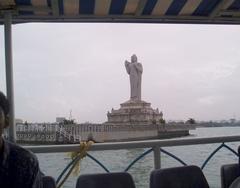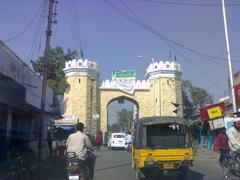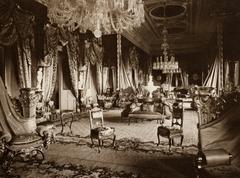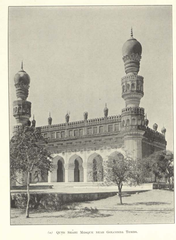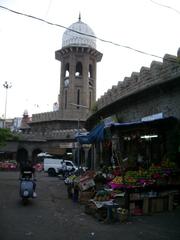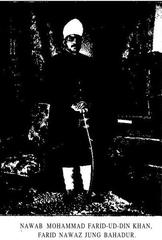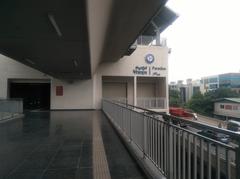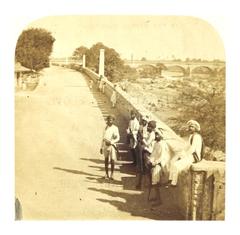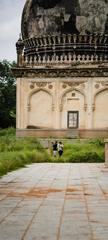Sultan Nagar Fort: Visiting Hours, Tickets, and Historical Sites in Hyderabad
Date: 04/07/2025
Introduction
Situated within the dynamic urban landscape of Hyderabad, Sultan Nagar Fort stands as a lesser-known yet culturally significant monument from the Qutb Shahi era. Commissioned in the early 17th century by Sultan Muhammad Qutb Shah, the fort was designed to be a new center of power, distinct from the established hubs of Golconda and Hyderabad. Though left unfinished due to the Sultan’s untimely death, Sultan Nagar Fort offers invaluable insights into early modern urban planning, military architecture, and the socio-cultural evolution of the Deccan region (Wikipedia; Siasat).
Now enveloped by the city’s expansion, the fort is partially in ruins, its remnants and the active Khilla Maisamma Temple serving as a testament to the layered history of Hyderabad. This guide presents detailed information about Sultan Nagar Fort’s history, architectural features, visiting hours, ticketing, accessibility, preservation status, and practical travel tips—ideal for history enthusiasts and cultural explorers seeking offbeat Hyderabad experiences.
Table of Contents
- Historical Background and Origins
- Architectural Features and Layout
- Historical Context and Abandonment
- Transformation and Present-Day Status
- Location and Setting
- Structural Layout and Defensive Features
- Materials and Construction Techniques
- Architectural Style and Decorative Elements
- Functional Spaces and Interior Features
- Integration with the Urban Environment
- Visitor Information
- Visitor Experience and Tips
- Preservation Status
- Khilla Maisamma Temple: A Living Heritage
- Safety and Site Conditions
- Photography and Special Events
- Sultan Nagar Fort Compared to Other Hyderabad Forts
- FAQs
- Recommendations for Visitors
- Visual and Interactive Elements
- References
Historical Background and Origins
Commissioned between 1611 and 1626 by Sultan Muhammad Qutb Shah, Sultan Nagar Fort was conceived as an ambitious administrative and military hub, distinct from Golconda and the nascent city of Hyderabad. Strategically located in today’s Saroornagar/L. B. Nagar area, about six miles east of Hyderabad’s old city, the site was selected for its defensive advantage—though it faced challenges such as lack of water and local superstitions that later contributed to its abandonment (Wikipedia; Siasat).
Construction began around 1620, backed by a substantial outlay of 3 lakh gold coins (approx. Rs. 14 lakh in the 17th century). Planned as a sprawling 5,000-acre complex encircled by a massive moat, the fort symbolized Qutb Shahi ambition and architectural vision (Wikipedia).
Architectural Features and Layout
Though never fully realized, the fort’s design incorporated:
- Defensive Walls and Moat: High granite walls and a 75-foot-deep, 150-foot-wide moat, typical of Deccan military architecture.
- Central Palace Complex: Intended to house royal and administrative chambers.
- Religious Structures: Included a mosque, still visible today, exemplifying Qutb Shahi religious architecture.
- Later Additions: After abandonment, temples such as the Khilla Maisamma Temple were added, reflecting the region’s evolving religious landscape (Siasat).
Historical Context and Abandonment
Construction ceased with the Sultan’s death in 1625. His successor, Abdullah Qutb Shah, did not continue the project, and the combination of water scarcity and prevailing superstitions led to its neglect and gradual ruination (Siasat).
Transformation and Present-Day Status
As Hyderabad expanded, the fort was enveloped by urban development, rebranded locally as Maisamma Fort following the establishment of temples within its precincts. Encroachment, reuse of building materials, and lack of official heritage recognition have contributed to its fragile state. Despite this, the ruins—including segments of walls, the mosque, and traces of the moat—remain accessible to the public (Wikimedia Commons).
Location and Setting
Sultan Nagar Fort is located in the L. B. Nagar area of Hyderabad, approximately 2.4 km from Saidabad railway station. Surrounded by residential and commercial zones, its proximity to major roads and public transport makes it relatively accessible for visitors (yappe.in).
Structural Layout and Defensive Features
- Fortification Walls: Constructed from local granite, these robust walls exemplify Deccan defensive strategies (e-a-a.com).
- Gateways: Marked by large arched entrances, combining function and Indo-Islamic stylistic elements.
- Bastions and Watchtowers: Semi-circular or polygonal projections designed for surveillance and defense.
Materials and Construction Techniques
- Granite and Lime Mortar: Durable, locally sourced materials bound with lime mortar for strength.
- Lime Plaster: Used for smooth finishes and limited decorative detail.
- Wooden Elements: Present in doors and window frames, typically with simple carvings (e-a-a.com).
Architectural Style and Decorative Elements
- Indo-Islamic Influence: Evident in arches, domes, and geometric motifs.
- Minimal Ornamentation: Emphasis on defense rather than elaborate decoration.
- Courtyards: Internal open spaces for ventilation and gathering (e-a-a.com).
Functional Spaces and Interior Features
- Guardrooms and Barracks: Simple rooms for soldiers.
- Administrative Chambers: Slightly more refined finishes for officials.
- Storage Areas: Subterranean or inner wall spaces for supplies.
Integration with the Urban Environment
The fort’s immersion within a bustling neighborhood reflects the ongoing interaction between Hyderabad’s historical landmarks and contemporary city life. Its accessibility is balanced by the pressures of encroachment, underscoring the importance of preservation (yappe.in).
Visitor Information
Visiting Hours and Tickets
- Hours: Open daily, 8:00 AM – 6:00 PM (festival hours may vary).
- Entry: Free; no official ticketing system.
Access
- Easily reachable by taxi, auto, or bus from central Hyderabad; nearest metro is Victoria Memorial.
- Approach involves narrow lanes and urban congestion.
- Site is not fully accessible for differently-abled visitors due to uneven terrain.
Facilities
- No permanent visitor amenities; temporary stalls may appear during festivals.
- Guided tours are unofficial but may be available during major religious events.
Safety
- Caution is advised due to collapsed ceilings, uneven floors, and partial ruins.
- Daytime group visits are safest.
Visitor Experience and Tips
- Best Time to Visit: Early morning or late afternoon for optimal weather and light.
- Dress Code: Modest attire recommended, especially in temple areas.
- Photography: Permitted, but request consent before photographing religious ceremonies or worshippers.
- Combine Visits: Pair with trips to Golconda Fort or Charminar for a broader historical experience.
Preservation Status
Structural Integrity and Encroachment
The fort is heavily weathered, with some ramparts and rooms collapsed. Much original material has been repurposed or lost to encroachment. Only a small portion remains accessible, and no major government conservation initiatives are underway (The Hindu).
Local Efforts
Temple caretakers maintain the Khilla Maisamma Temple and attempt to protect the remaining structures with limited resources.
Khilla Maisamma Temple: A Living Heritage
Within the fort’s precincts stands the Khilla Maisamma Temple, dedicated to the local goddess. The temple is especially active during the Bonalu festival (July/August), when the site becomes vibrant with processions, music, and traditional rituals (The Hindu).
Photography and Special Events
Bonalu festival offers unique photographic opportunities, capturing a blend of ancient architecture and lively cultural celebrations. Always observe local sensitivities when taking photographs.
Sultan Nagar Fort Compared to Other Hyderabad Forts
While Golconda Fort is renowned for its scale, preservation, and tourism infrastructure, Sultan Nagar Fort offers a more atmospheric and authentic encounter with Hyderabad’s layered heritage. The presence of an active temple within the ruins adds a living dimension to the experience.
FAQs
Q: What are Sultan Nagar Fort’s visiting hours?
A: 8:00 AM to 6:00 PM daily.
Q: Is there an entry fee?
A: No, entry is free.
Q: Are guided tours available?
A: No official tours; local guides may be present during festivals.
Q: Is the fort accessible for differently-abled visitors?
A: Accessibility is limited due to uneven terrain.
Q: When is the best time to visit?
A: During the Bonalu festival (July/August) or in the cooler parts of the day.
Q: Are facilities available?
A: No permanent facilities; temporary stalls appear during festivals.
Recommendations for Visitors
- Visit in small groups for safety and a richer experience.
- Respect religious customs and site fragility.
- Plan your route in advance and carry essentials.
- Support local preservation efforts when possible.
Visual and Interactive Elements
- High-quality images: “Sultan Nagar Fort entrance,” “Khilla Maisamma Temple during Bonalu festival,” “Atmospheric ruins of Sultan Nagar Fort.”
- Map: Pinpoint location with major access routes and nearby attractions.
References
- Wikipedia: Sultan Nagar Fort
- Siasat News Article on Sultan Nagar Fort
- Hyderabad Tourism
- Wikimedia Commons - Sultan Nagar Fort
- yappe.in: Sultan Nagar Fort in Hyderabad
- e-a-a.com: Architectural Highlights of Hyderabad
- The Hindu: Khilla Maisamma Fortress Temple
Conclusion and Call to Action
Sultan Nagar Fort, with its crumbling ramparts, unfinished mosque, and vibrant temple, embodies the layered legacy of Hyderabad’s history. Though overshadowed by grander monuments, it invites visitors to engage with a unique blend of royal ambition, cultural adaptation, and living tradition. By visiting respectfully and supporting local heritage, travelers can help preserve this evocative site for future generations.
For more detailed guides and curated itineraries on Hyderabad’s historical sites, download the Audiala app. Stay updated by following our social media for the latest news, travel tips, and cultural insights.
